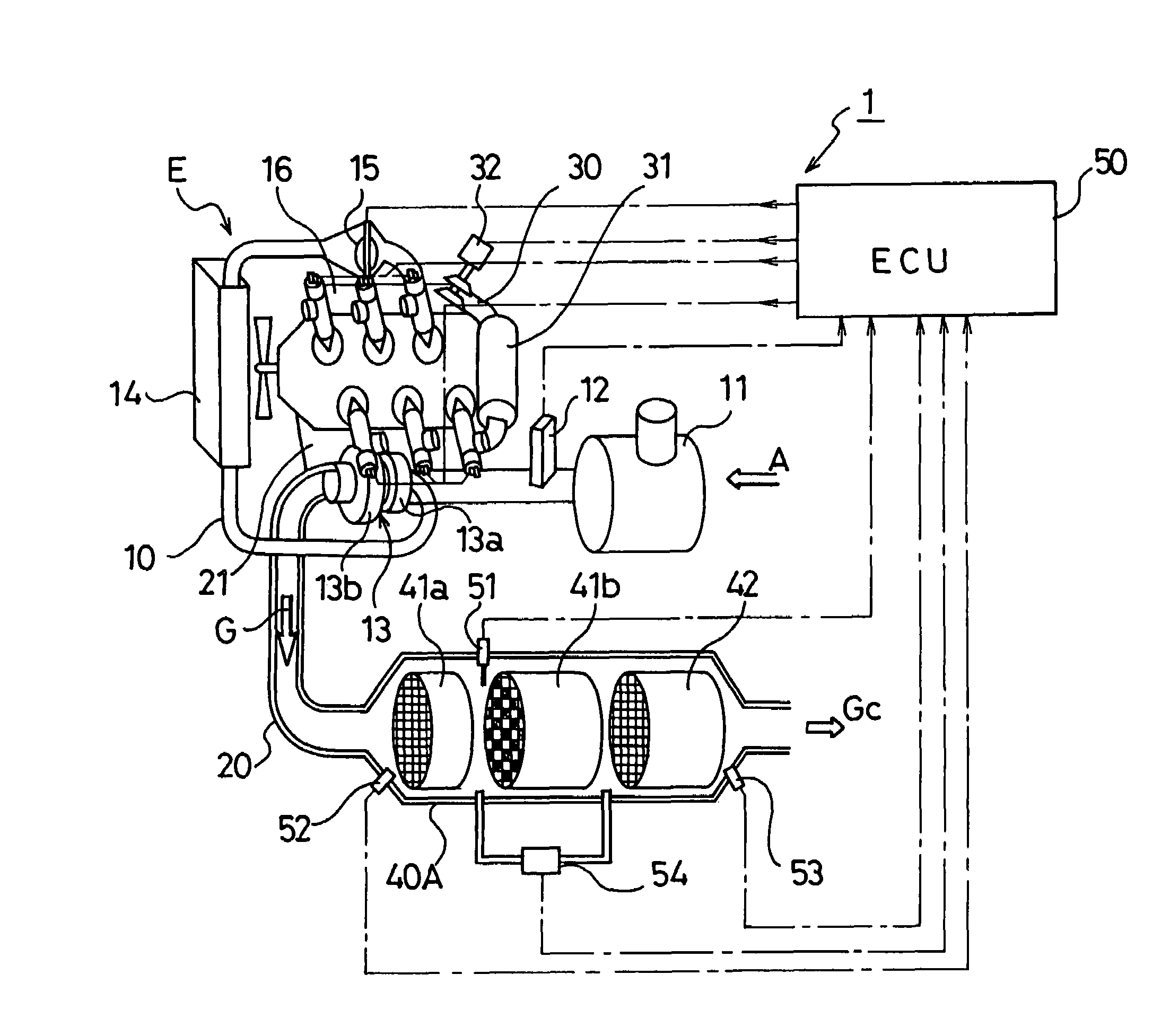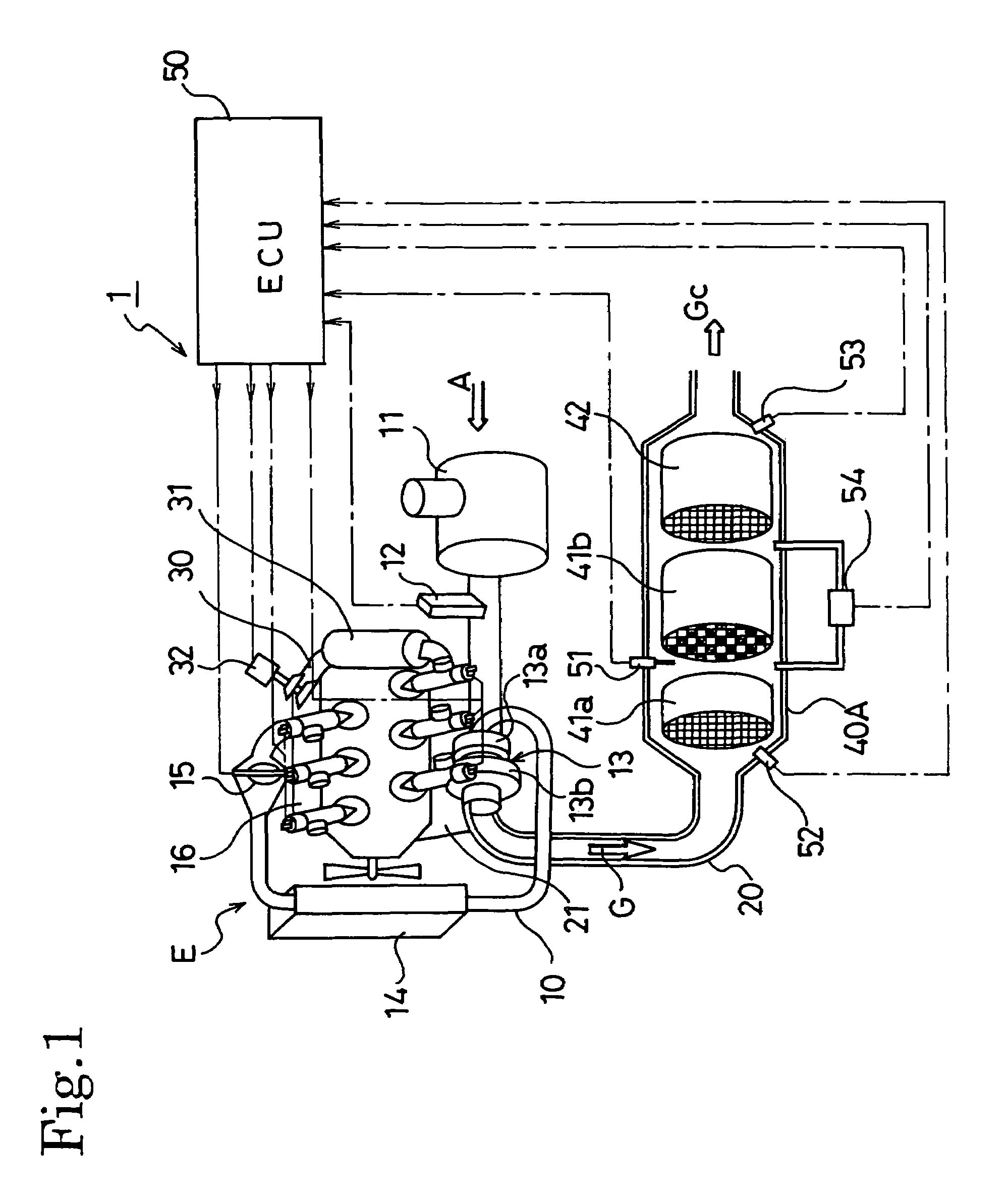Exhaust gas cleaning method and exhaust gas cleaning system
a technology of exhaust gas and cleaning method, which is applied in the direction of machines/engines, electrical control, separation processes, etc., can solve the problems of large amount of pm generated, catalyst cannot burn soot components in the pm by itself, and cannot meet the regulatory value, so as to reduce the richness of the system, reduce the accumulation of pm, and simplify the system
- Summary
- Abstract
- Description
- Claims
- Application Information
AI Technical Summary
Benefits of technology
Problems solved by technology
Method used
Image
Examples
Embodiment Construction
[0040]With reference to the drawings, an exhaust gas cleaning method and an exhaust gas cleaning system according to embodiments of the present invention will be described below.
[0041]FIG. 1 shows a configuration of an exhaust gas cleaning system 1 of embodiments. This exhaust gas cleaning system 1 includes an exhaust gas cleaning device 40A in which an oxidation catalyst (DOC) 41a, a DPF 41b and an NOx occlusion / reduction type catalytic converter 42 are sequentially arranged from the upstream in an exhaust passage 20 of an engine (internal combustion engine) E. A continuous regeneration type DPF 41 is formed of the oxidation catalyst 41a located at the upstream side and the DPF 41b located at the downstream side.
[0042]The oxidation catalyst 41a is formed of a monolith catalyst having a number of polygonal cells. The monolith catalyst is a structural material made of cordierite, SiC or stainless steel. On an inner wall of the polygonal cell, a catalyst coat layer is provided, which ...
PUM
| Property | Measurement | Unit |
|---|---|---|
| exhaust gas temperature | aaaaa | aaaaa |
| temperature | aaaaa | aaaaa |
| temperature | aaaaa | aaaaa |
Abstract
Description
Claims
Application Information
 Login to View More
Login to View More - R&D
- Intellectual Property
- Life Sciences
- Materials
- Tech Scout
- Unparalleled Data Quality
- Higher Quality Content
- 60% Fewer Hallucinations
Browse by: Latest US Patents, China's latest patents, Technical Efficacy Thesaurus, Application Domain, Technology Topic, Popular Technical Reports.
© 2025 PatSnap. All rights reserved.Legal|Privacy policy|Modern Slavery Act Transparency Statement|Sitemap|About US| Contact US: help@patsnap.com



